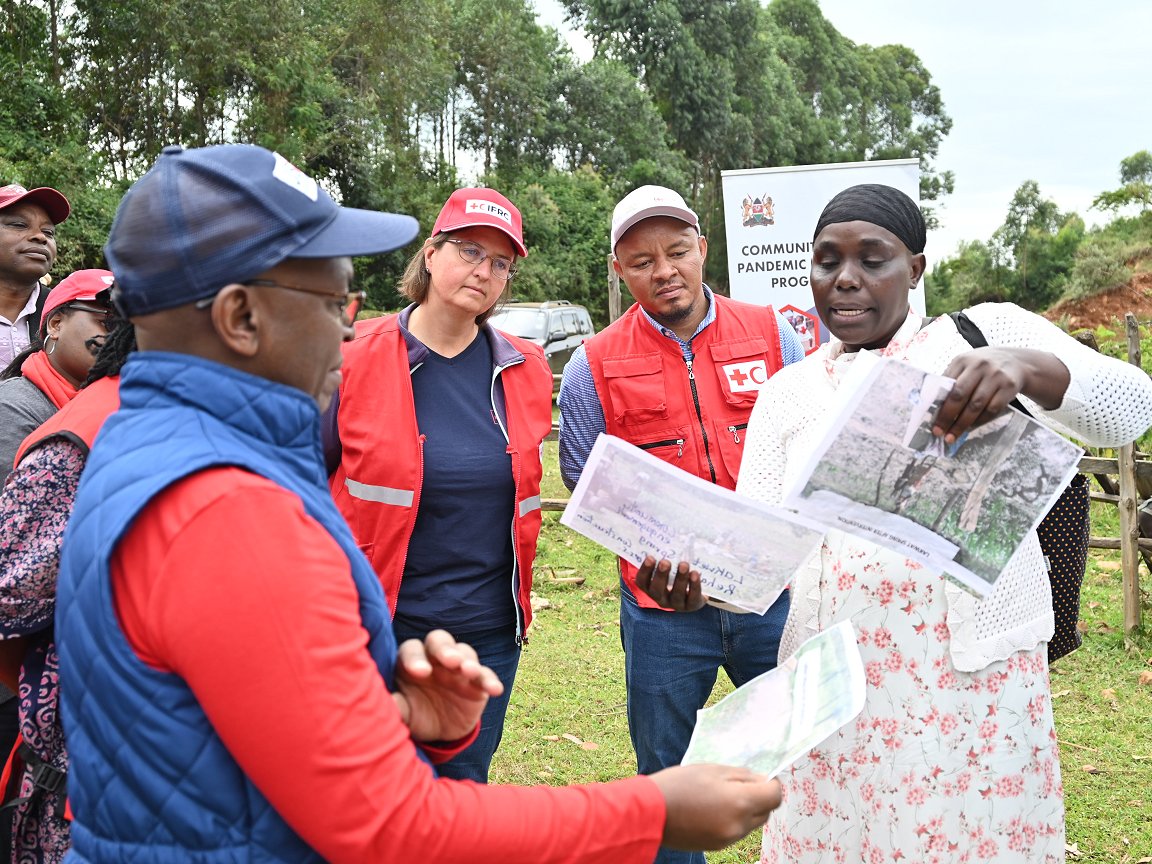
Risk reduction against water-borne diseases bears fruit in rural Kenya

By Rita Nyaga, IFRC Nairobi Senior Communications Officer
(This story first appeared on the IFRC website on Friday, the International Day for Disaster Risk Reduction)
In the last two years, villages like Cheplelwa, in the south-western Kenyan county of Bomet, have witnessed a significant increase in diseases such as cholera and hepatitis B – both triggered by consumption of contaminated water.
To ensure comprehensive protection of water sources, the Kenya Red Cross and the IFRC have mobilized to educate communities on measures they can take to protect natural springs from contamination and then ensure that they remain clean.
Springs serve as the main source of water in this region, but it’s common practice for animals to be taken to the springs to drink. Meanwhile, residents also come to the spring and scoop the same water for domestic use.
Chebett, a community health-worker trained by the Kenya Red Cross, believes the lack of springs in neighbouring villages accelerated the increase in cholera cases. In the previous months, those villages also experienced an outbreak of hepatitis B.
Alternating weather patterns cause drought and flooding, impacting water sources, livelihoods and food security, leaving people more vulnerable to infectious disease
“At the time of screening and sensitizing communities about Covid-19, and about the importance of getting vaccinated, some people were diagnosed with hepatitis B,” Chebett said.
“We reported this to the Ministry of Health and they called for a massive check-up.”
This included community-wide screenings for hepatitis B as well as continued sensitization on sanitation practices. Those found to be negative for hepatitis B were vaccinated while positive cases were given drug treatments.
After several months, medical personnel from the Cheplelwa dispensary embarked on another massive screening and vaccination, with the aim of eradicating the hepatitis B virus in the area.
But complete eradication became difficult because the hepatitis B vaccine is given in two doses. Some community members took the first dose but did not return.
It was not long before symptoms – such as non-stop talking or speaking incoherently – began to appear. Mass screening is still ongoing to hasten the identification of new cases.
The efforts come as part of IFRC’s focus on working with communities to build their resilience and support to break the cycle of disaster impacts amidst the changing climate.
In the Horn of Africa, the alternating weather patterns have continued to cause drought and flooding, impacting water sources, livelihoods and food security. All these factors leave people more vulnerable to infectious diseases.
Underground tanks
Chebett said that when speaking with community members, she tells them that springs must be protected and the area kept clean.
To avoid contamination of the water, communities were encouraged to build underground water tanks to collect spring water. Water taps were then installed next to these tanks at a distance of ten metres. Community members were involved in the construction of the underground tanks.
Though the spring-water flowing through the taps is now clean, families were encouraged to boil the water used for drinking and cooking and store it in clean containers and keep them closed. Water pans for animals to drink were also created.
Because this area is between two hills, rainwater flowing down the hills also carries debris. Those who drink the water before boiling it could suffer from acute watery diarrhoea. This led some families and community members to claim that the water had been poisoned so they stopped drinking water altogether.
But after receiving information from community health-workers who were trained by the Kenya Red Cross, they started boiling water used for drinking and cooking, and washing their hands before and after eating.
The hygiene standards have also generally improved. Every household was encouraged to build a toilet, and to wash their hands after using the toilet.
“The education we give is bearing fruit,” Chebett said of the community engagement efforts, which were made possible through support by USAID-funded Community Epidemic and Pandemic Preparedness (CP3) programme.
The Kenya Red Cross and the IFRC have mobilized to help communities protect natural springs from contamination and ensure they stay clean, as part of their battle against cholera and hepatitis B. (Photo: Rita Nyaga/IFRC)